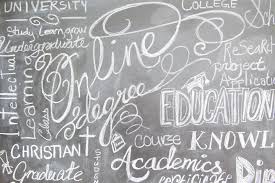
Human civilization as we know it is roughly only about six thousand years old, according to Universe Today. However, as time passes and our species develops new technology, lifestyles, economies and much more, our education systems grow and change as well.
For many centuries, our method of education has been face to face between an instructor and student. With incorporating more technology into our schools and lessons in recent years, it is only expected that modern education offers more online experiences, opportunities and options. So, what is eLearning, or online learning, and what does it do better than face to face learning?
Though there is no academic science or technology that provides an official definition to online learning, Tony Bates’ “Online Learning for Beginners” defines it as “any form of learning conducted partly or wholly over the internet.” North Carolina State University expands upon this in their 2015 article on the pros and cons of online education. They explain that an online method of education can be an effective alternative method of education for students and learners who can be self-disciplined, motivated, well-organized and have a high degree of time management skills. North Carolina State University says an online education’s benefits include convenience, being less expensive, more accessible with other additional benefits. There
is no commuting, learning pace constraints or travel and housing costs to classrooms. One has opportunities to work with peers not only all over the United States but around the world. Additionally, Top Education Degrees says that online learning provides a flexible schedule, access to courses twenty-four-seven and availability to programs.
There are some disadvantages to online education, according
to North Carolina State University and Jason Gaya of eLearning Industry and Top Education Degrees. Both say that learners with low motivation or unhealthy study habits may fall behind as well as students feeling more isolated from the instructor and classmates. Furthermore, there is limited social interaction, technology expenses, and may become problematic for instructors as they must constantly adapt at the speed in which technology is advancing. Other disadvantages may include the management of PC (personal computer) files, frustration with dealing with slow web connections or older computers as they may become problematic to accessing course materials, and the effectiveness of taking assessments through online courses.
Gaya also provides brief insight on what traditional learning, has to bring to the table against an online education. The advantages that come with traditional, classroom learning include face-to-face instruction, being ready to raise queries within the moment, face-to-face interaction with peers, and networking less complicated. There are also disadvantages to traditional learn- ing. Students have to figure at the speed of the category and the category begins at a selected time. Neil Kokemuller of Classroom expands upon this by saying that traditional, classroom learning is inflexible, brings many social distractions, and demands a lot of participation from students who find this challenging.
Which is better for us, online learning or face-to-face learning? Sterling Academy faculty member Dr. James Croasmun writes about this in a 2014 article. Several studies have been conducted to examine the effectiveness of online learning versus traditional learning, according to Croasmun. One of these studies was conduct- ed by Karen Swan stated: “…it is clear that when compared using gross measures of learning effectiveness, students learn as much if not more from online courses as they do in traditional higher education courses.” Some of her findings include that a blind re- view process comparing students’ performances when enrolled in an online graduate course with that of the same version of the course taught face-to-face showed no significant differences and a study comparing midterm scores between students enrolled online and students at Stevens Institute of Technology found little to no differences in student outcomes. Other studies taken by Swan also showed an equivalent or increased performance of nurses in the field who graduated from online courses and programs. Thomas L. Russell in year 1999 also compared student outcomes in online and face-to-face by examining 350 studies the result that show no significant differences in student outcomes.
In summary, there are advantages and disadvantages to both eLearning and face-to-face learning that compliment some students more than others, but neither actually doing better than the other. In academic environments besides a college or university, students aren’t given many opportunities to customize their education and pick between eLearning or traditional education and must adapt to face-to-face learning for the moment. However, with graduation approaching day by day, it becomes important to know how one wants to be educated and what kind of education works best for them and what they have in store for the future.

